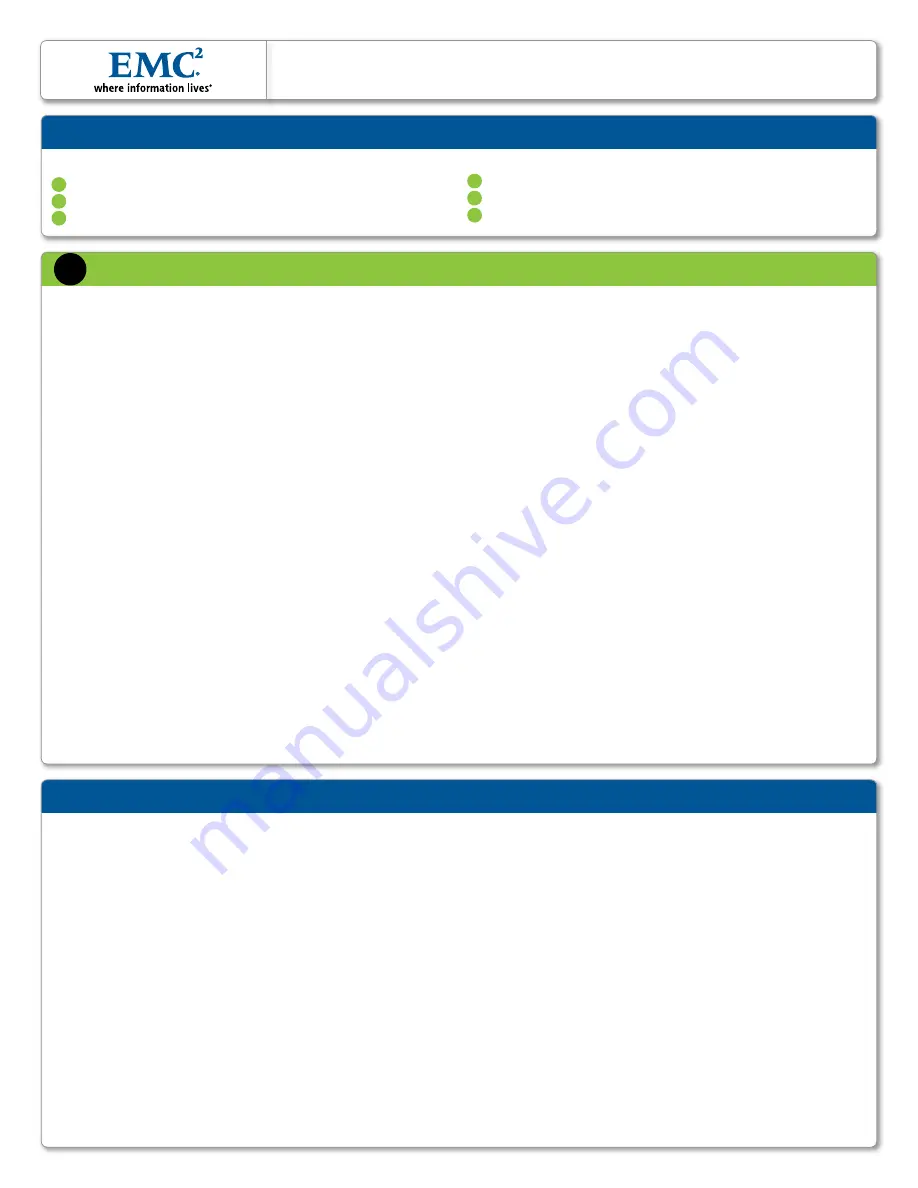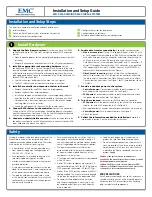
All plug-in modules and blank plates are part of the
fire enclosure and must be removed only when a
replacement can be added immediately. The system
must not be run without all parts in place.
4
A controller or a shelf must be operated only
from a power supply input voltage range of
100–240 VAC, 50–60 Hz.
4
Each component is intended to operate with
two working power supplies installed.
4
Provide a suitable power source with electrical
overload protection.
4
A safe electrical earth connection must be pro-
vided to the power cord. Check the grounding
of the power sources before applying power.
4
The plug on each power supply cord is used
as the main disconnect device. Ensure that the
socket outlets are located near the equipment
and are easily accessible.
4
Permanently unplug the unit if you think it is
damaged in any way and before moving it. If
the unit is powered by multiple sources, discon-
nect all supplied power for complete isolation.
4
The power connections must always be
disconnected prior to removal or replacement
of a power supply module from any of the
components in the system.
4
A faulty power supply module must be replaced
within 24 hours.
4
Do not lift system components by yourself. A
controller weighs up to 52 lbs (23.6 kg) and an
ES20 expansion shelf weighs 78 lbs (35.5 kg).
4
Do not lift an ES20 by the handles on the PSU/
cooling module. The handles are not designed
to support the weight of the populated shelf.
4
To comply with applicable safety, emission,
and thermal requirements, covers must not
be removed and all bays must be fitted with
plug-in modules.
4
Load the rack beginning at the bottom to
prevent the rack from becoming top-heavy.
4
Do not extend components on slide rails until
you have loaded at least three or more similarly
weighted items in the rack, or unless the rack
is bolted to the floor or overhead structure to
prevent tipping.
Caution:
If the system is used in a manner not
specified by the manufacturer, the protection provided
by the equipment may be impaired.
Caution:
The RJ45 sockets on the motherboard/PCI
cards are for Ethernet connection only and must not be
connected to a telecommunications network.
ESD PrEcautionS
Data Domain recommends that you fit and check a
suitable antistatic wrist or ankle strap and observe
all conventional ESD precautions when handling
plug-in modules and components.
Safety
1. Unpack the Data Domain system.
A system consists of a DD860
controller and up to 192 TB of raw storage in optional ES20 expansion
shelves.
4
Open the packing boxes for the controller and optional expansion shelf
or shelves.
4
Remove the accessories and rack mount kits for all system components.
2. Install the appropriate rack mounting hardware
for the
controller and ES20s into a 19-inch, four-post rack. Ensure that the rack is
securely anchored to prevent tipping. Load the rack or cabinet beginning
at the bottom to prevent the rack from becoming top-heavy. Be sure to
plan appropriate vertical space to accommodate the 2U controller and 3U
for each ES20 expansion shelf.
4
See the instructions included with the slide rails. See Figure 1.
4
The ES20 slide rails also include rack installation instructions.
3. Install the controller and expansion shelves in the rack.
4
Remove the controller and ES20s from the shipping boxes.
4
Remove the bezel from each component.
4
Install each component horizontally on the corresponding slide rails
and slide into the rack in the order described in the
Expansion Shelf
Hardware Guide
. Be sure one person is at each side of each compo-
nent to guide it into the rail ends.
4
Secure the components in the rack with the thumb screws.
4. Connect ES20 shelves to the controller.
Connect the controller’s
SAS ports to the ES20 shelves based on the cabling diagrams for expan-
sion shelf connectivity. See Figure 5. Use the Cable Management Bar and
Velcro strips to support and organize all cables.
5. Connect an administrative console.
Attach a serial console to the
controller’s serial port; or use KVM connections to connect monitor (VGA
port), keyboard and mouse. See Figure 1.
6. Enable data transfer connectivity.
Repeat for each connection.
4
Ethernet connection:
If using 1 Gb copper Ethernet, attach a Cat 5e
or Cat 6 copper Ethernet cable to an RJ45 Ethernet network port (start
with eth0a and go up) on the controller, and attach the other end to
an Ethernet switch or to an Ethernet port on your server. If using
1 Gb fiber Ethernet, use multimode fiber cables with LC connectors. If
using 10 Gb copper Ethernet with an SFP+ connector, use a qualified
SFP+ copper cable. If using 10 Gb fiber Ethernet, use MMF-850nm
cables with LC duplex connectors. See Figure 1.
4
Fibre Channel connection:
Attach a Fibre Channel fiber optical
cable (LC connector) to a VTL HBA port on the controller, and attach
the other end (LC connector) to a Fibre Channel switch or to a Fibre
Channel port on your server. See Figure 1 for PCI card locations for the
VTL HBAs.
7. Provide redundant power to the system.
4
Controller power:
Connect power cables to both receptacles. On
each cable, attach the cable restraint tie. See Figure 1.
4
ES20 power:
Connect power cables to both receptacles and attach
the power cable retention clips. See Figure 4.
8. Turn the system on.
Power on any ES20s before the controller.
4
ES20 power:
Turn the power switch to
on
for each of the two power
supplies for each ES20 expansion shelf. See Figure 4.
4
Wait approximately 3 minutes after all expansion shelves are turned on.
4
Controller power:
Push the power button. See Figure 2.
4
Attach the bezels.
9. Collect the information needed for installation.
Record the
information in section 2 on the other side of this sheet.
install Hardware
1
The steps for a complete installation and configuration are:
1.
Install hardware
2.
Define the Data Domain system information for your site
3.
Perform initial system configuration
4.
Configure the system for data access
5.
Configure optional software
6.
Perform optional additional system configuration
installation and Setup Steps
1
5
4
3
2
6
installation and Setup Guide
EMc Data DoMain DD860 StoraGE SyStEM
























